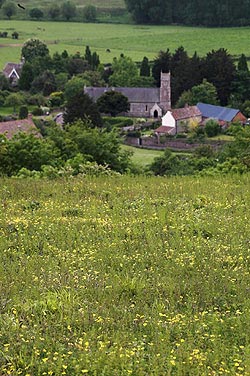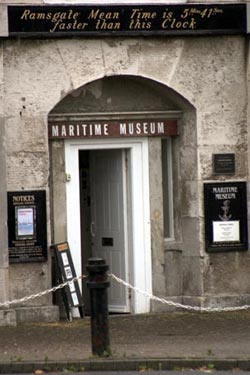Canon 75-300mm USM III
This lens is one of a number that Canon produces in this 75-300mm range. This one is one of two in their budget range and is the better of the pair, having a USM motor to improve the autofocus performance. Being possibly the most popular second lens in most photographers’ kit bag, we take a look at how it performs.
Specifications
- Focal length 75-300mm
- Aperture f/4-5.6
- Angle of view -8°
- Filter size / type 58mm
- Construction Elements/groups 13 elements in 9 groups
- Focusing type USM rotating
- Closest focus 1.5m
- Weight 0.48kg
- Dimensions (Dia x length) 71x122.1mm
- Mounts available Canon,
- Tripod bush No
- Price £189
Build and Handling
This relatively lightweight lens has more than three quarters of the lens barrel taken up with the zoom ring. A wide (38mm) band of ribbed rubber grip takes up about half of this and the ring is marked at 75, 100, 135, 200 and 300mm markings. At the front of the lens is a narrow ring for manual focussing. The front 10mm of the lens is the part holding the front element, which both extends and rotates during focussing. Zooming also extends this element so that when zoomed and close focussed, the lens is some 70mm longer.
Focussing was quiet, down to the USM motor but not exceptionally fast and although it was good at the wide end, it often hunted at the long end, especially with low contrast subjects and occasionally with extra high contrast ones too!
Manual over-ride was not possible when the lens was set to autofocus and when set to manual, by way of a switch on the left side of the barrel, the focus ring became loose and easy to turn. Although narrow, this ring was still relatively easy to use.
The build quality was reasonable for a lens in this price bracket, although still a little plasticy to inspire confidence.
Optical Quality
Canon has a reputation for producing good lenses and it this respect the lens was a little disappointing. Usable at the short end, the performance dropped significantly towards the longer focal length, becoming decidedly soft fully extended. Given that a number of people buying this lens will be doing so for the reach of the long end, I would like to have seen a bit better performance there. Distortion however, was negligible, with a slight pincushion at the short end, which disappeared soon after the onset of zooming and did not turn into barrel at the longer end. Chromatic aberration was not a concern, possibly disguised by the softness! If you are only printing to A4, then you may just get away with this lens.
| 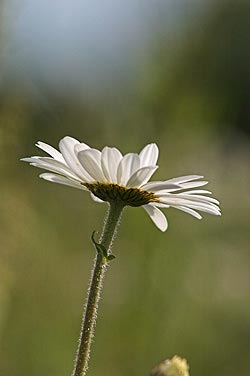 The closest focus is only 1.5m |
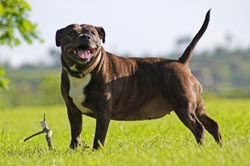 At 75mm you get a reasonable performance | 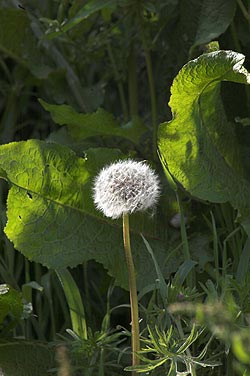 The closest focus is only 1.5m |
Click on each comparision photo below to view full size versions
Below is our lens test data. To find out how to use these graphs look at this article: How we test lenses
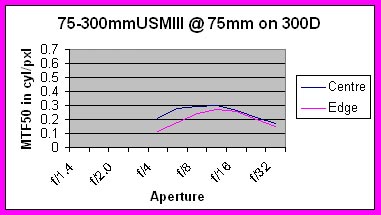
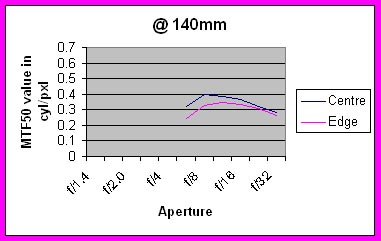
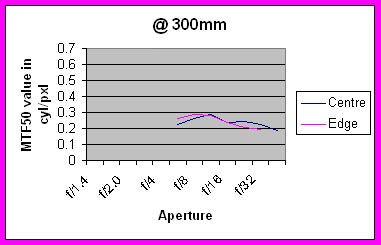
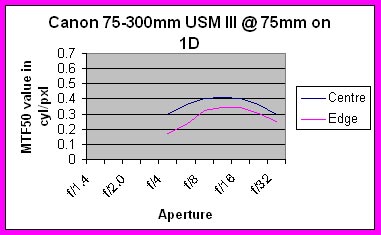
Verdict
Despite its drawbacks, this is still quite a usable budget telephoto lens. It does not carry much of a weight penalty, and therefore has more chance of being in the bag when you want the extra reach that it offers. In its class, its biggest drawbacks are the close focus ability being poor and softness at the longer end.
In summary the main positive points of the Canon 75-300mm USM III are:
![]() Autofocus is quiet and fairly responsive.
Autofocus is quiet and fairly responsive.
![]() Light weight and easy handling
Light weight and easy handling
![]() Distortions well controlled
Distortions well controlled
![]() Price
Price
Negative points are:
![]() Sharpness falls off towards the long end
Sharpness falls off towards the long end
![]() Rotating front element
Rotating front element
![]() Narrow focus ring (Minor point)
Narrow focus ring (Minor point)
Check the latest price of the Canon 75-300mm USM III here
Test by Ian Andrews www.wildaboutkent.co.uk
Add your message
Please login here or if you've not registered, you can register here. Registering is safe, quick and free.
photodo Stats
428 MTF tests
74 in-depth photodo reviews
100+ users join each day
Help the lens community by reviewing or rating a lens today via our lens search
Latest Lens Reviews
- Chinon 28mm f/2.8 Vintage Lens Review
- Canon EF 70-200mm f/4L IS II USM Lens Review
- Samyang AF 85mm f/1.4 EF Review
- Sigma 70mm f/2.8 DG Macro Art Review
- Samyang AF 24mm f/2.8 FE Review
- Meike 50mm f/1.7 Review
- Tamron 70-210mm f/4 Di VC USD Review
- Lensbaby Burnside 35mm f/2.8 Review
- Asahi Super Takumar 50mm f/1.4 Review
- Asahi Super-Multi-Coated Takumar 135mm f/3.5 Review
